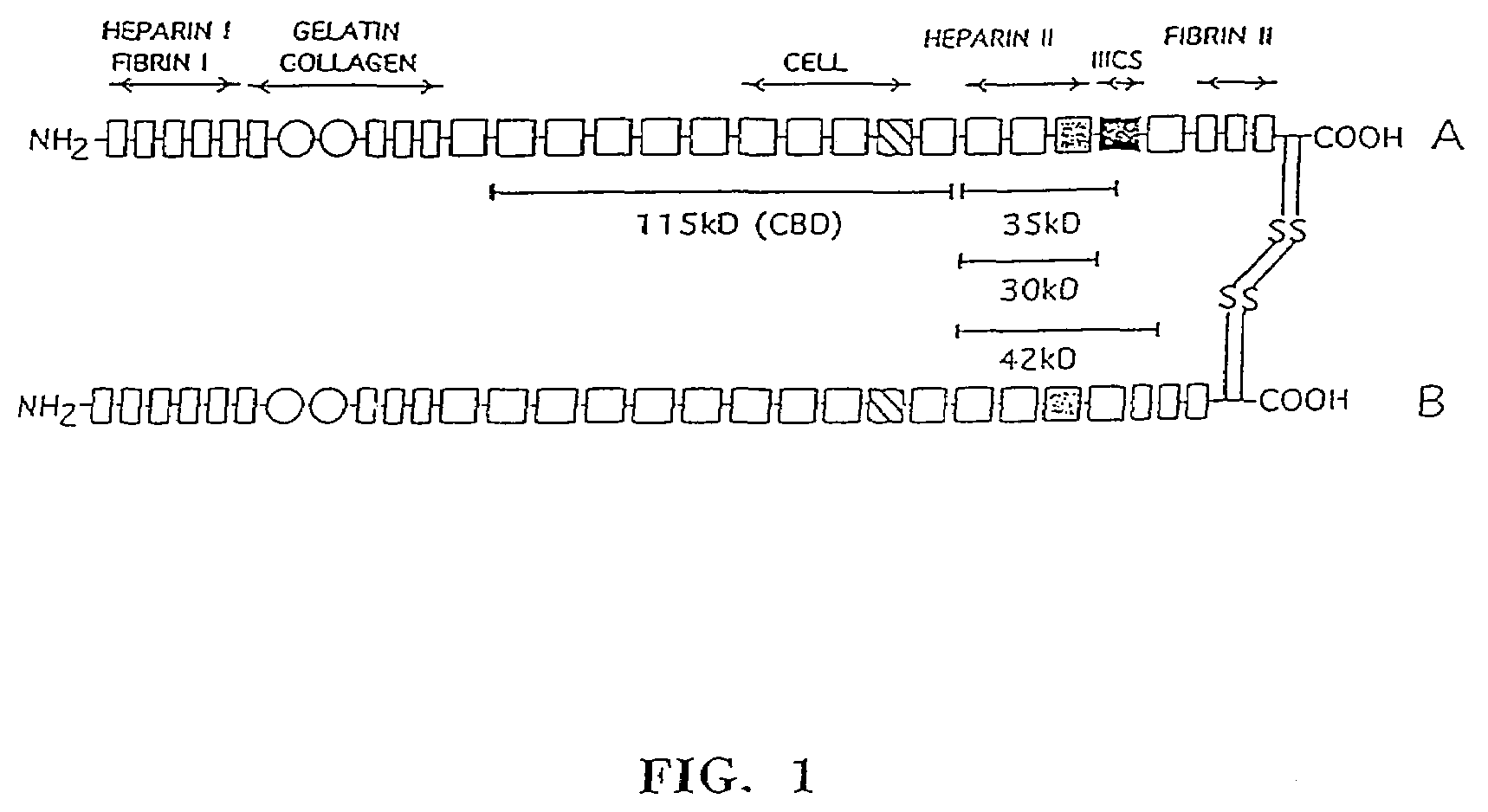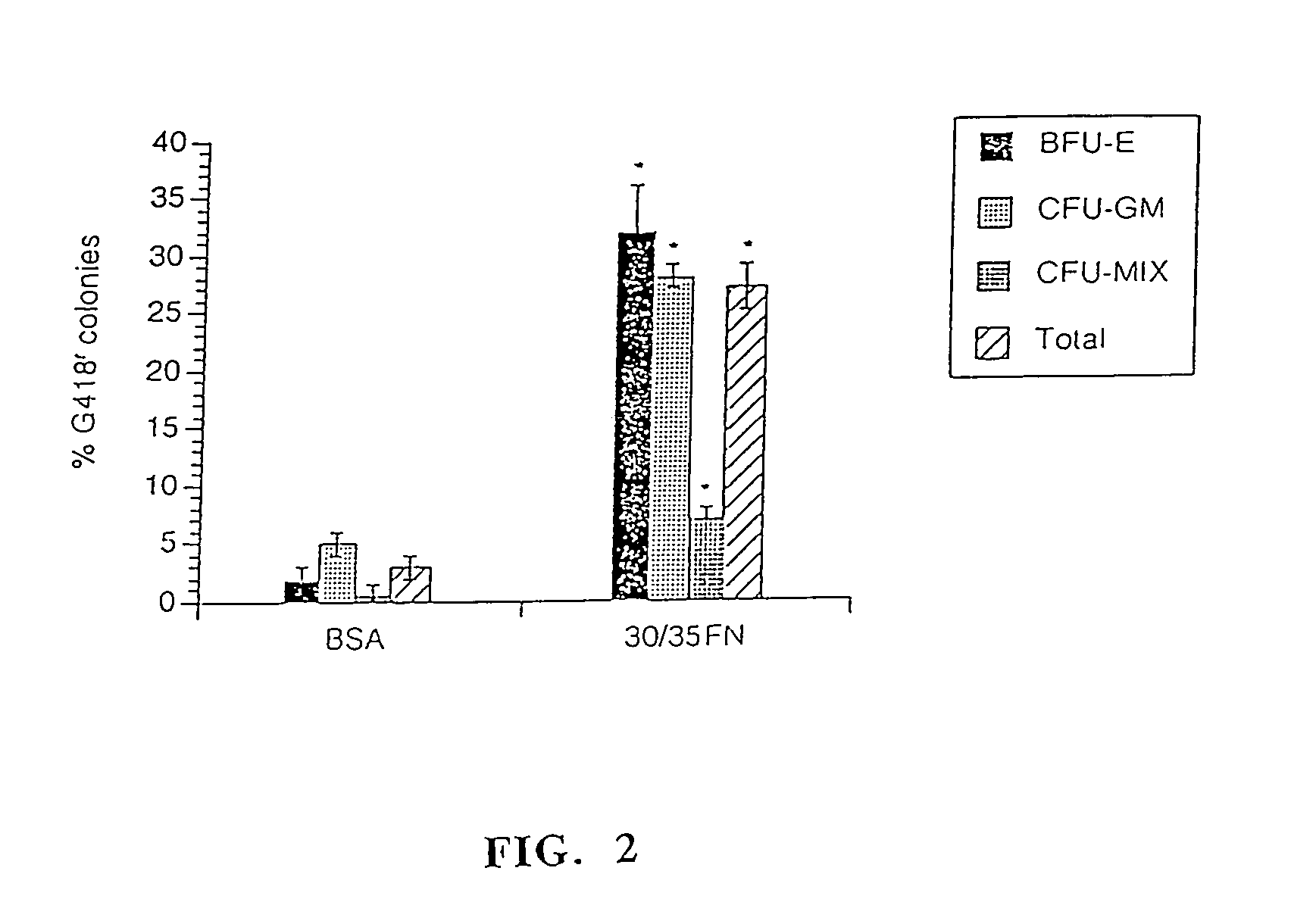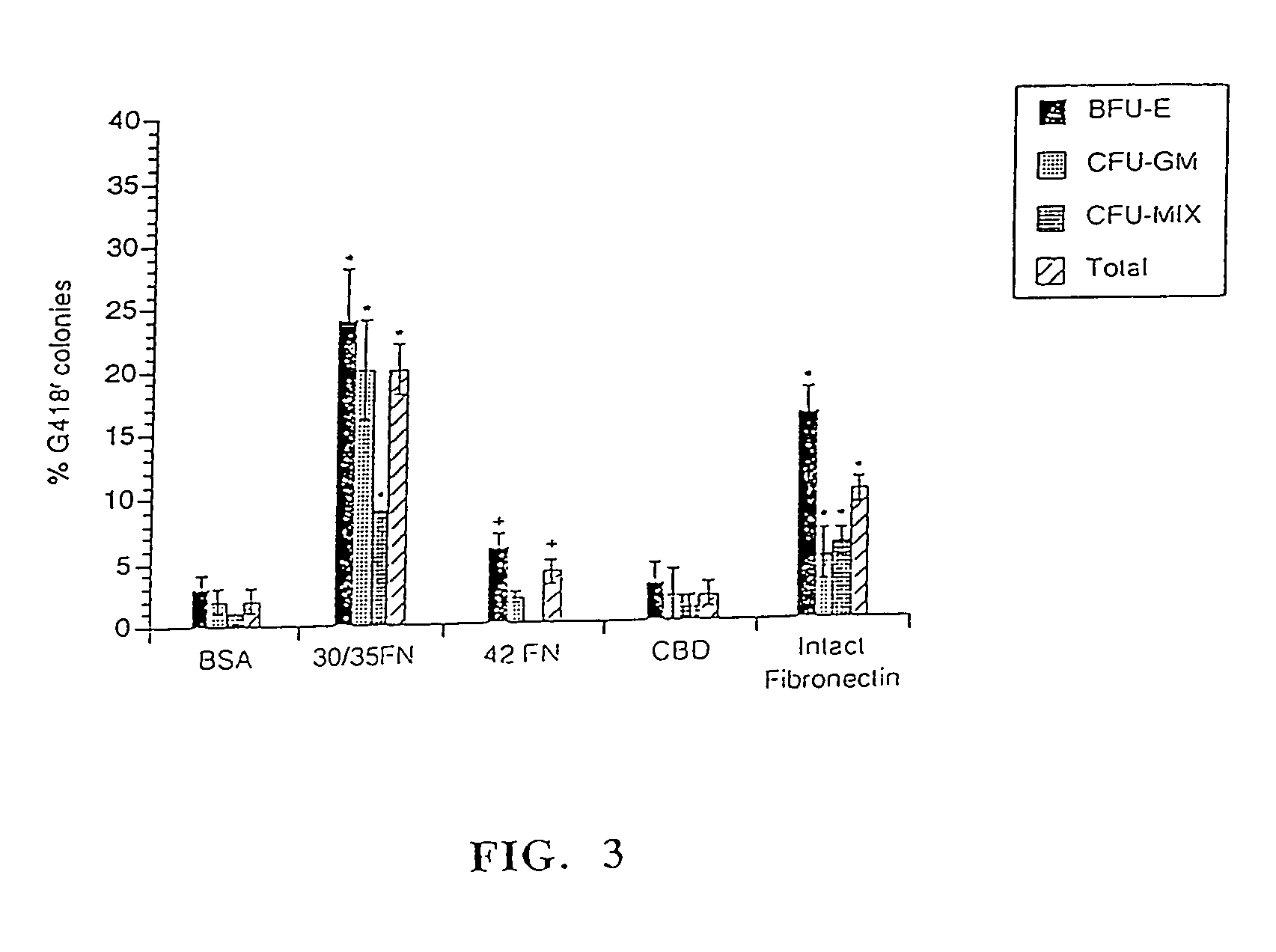Methods for enhanced retroviral-mediated gene transfer
a retroviral and gene transfer technology, applied in the field of enhanced retroviral-mediated gene transfer, can solve the problems of inability to carry out vivo experiments in large animals, such as dogs and primates, and the limitations of current gene transfer technology are further complicated, and achieve the effects of increasing the transduction efficiency of cells, increasing transduction efficiency, and reducing, rather than increasing, transduction efficiency
- Summary
- Abstract
- Description
- Claims
- Application Information
AI Technical Summary
Benefits of technology
Problems solved by technology
Method used
Image
Examples
example 1
Gene Transfer into Bone Marrow Cells Using TKNEO
1.1. Preparation of Virus-Supernatant
[0073]GP+EnvAM 12 producer cells (see Markowitz et al. (1988) Virology 167:400) containing retroviral plasmid TKNEO vector were cultured in Iscove's Modified Dulbeccos Medium (IMDM, Gibco, Gaithersburg, Md.) containing 10% fetal calf serum (FCS, Hyclone, Logan, Utah) and 100 units / ml penicillin and 100 microgram / ml streptomycin (P / S, both Gibco). Virus containing supernatant was collected by adding 10 ml of IMDM containing 20% FCS to confluent plates overnight. Harvested medium was filtered through 0.45 micron filters (Gelman Sciences, Ann Arbor, Mich.) and stored at −80° C. until used.
1.2. Preparation of Fibronectin Fragments
[0074]FN was purified from human plasma (Lifesource, Glenview, Ill.) as previously described in Ruoslahti et al., Methods Enzymol. 82:803–831 (1982), except that the gelatin-agarose column was washed with 1M urea prior to elution of FN with 4M urea. Purified FN was dialyzed ext...
example 2
Gene Transfer into Bone Marrow Cells Using PGK-mADA
2.1. General Procedures
[0086]PGK-mADA virus supernatant was prepared as described for TKNEO in Example 1. Chymotryptic fragments of fibronectin (FIG. 1) were prepared as previously described in Example 1 and the retroviral infection protocol of Example 1 was followed. LTC-IC (human stem cells) assays and Methylcellulose assays were performed according to Example 1.
2.2. Analysis of Retroviral Infection
[0087]Efficiency of infection with the PGK-mADA vector was determined by protein analysis using ADA isoenzyme electrophoresis. Analysis of individual progenitor colonies was performed as previously described by Moritz (1993) and Lim et al. (1989) Proc. Natl. Acad. Sci., USA, Vol. 86, p 8892. To stringently analyze transfer efficiency, only colonies expressing mADA at the same or a higher level than endogenous human ADA were considered transduced. For analysis of pooled colonies, colonies picked out of methylcellulose culture were combin...
example 3
Gene Transfer into Bone Marrow Cells Using PGK-hADA
3.1. General Procedure
[0093]PGK-hADA virus supernatant is prepared as described for TKNEO in Example 1. Chymotryptic fragments of fibronectin (FIG. 1) are prepared as previously described in Example 1 and the retroviral infection protocol of Example 1 was followed. LTC-IC and methylcellulose assays were performed as described in Example 1.
3.2. Analysis of Retroviral Infection
[0094]For analysis of pooled colonies, colonies picked out of methylcellulose culture are combined in 1.5 ml microtubes (Rainin, Woburn, Mass.), washed with warm medium and PBS, centrifuged and stored at −20° C. For ADA analysis, cells are lysed in 5 microliter of lysis buffer by repeated freezing-thawing cycles and isoenzyme electrophoresis is performed as previously described.
PUM
| Property | Measurement | Unit |
|---|---|---|
| pH | aaaaa | aaaaa |
| pH | aaaaa | aaaaa |
| density | aaaaa | aaaaa |
Abstract
Description
Claims
Application Information
 Login to View More
Login to View More - R&D
- Intellectual Property
- Life Sciences
- Materials
- Tech Scout
- Unparalleled Data Quality
- Higher Quality Content
- 60% Fewer Hallucinations
Browse by: Latest US Patents, China's latest patents, Technical Efficacy Thesaurus, Application Domain, Technology Topic, Popular Technical Reports.
© 2025 PatSnap. All rights reserved.Legal|Privacy policy|Modern Slavery Act Transparency Statement|Sitemap|About US| Contact US: help@patsnap.com



